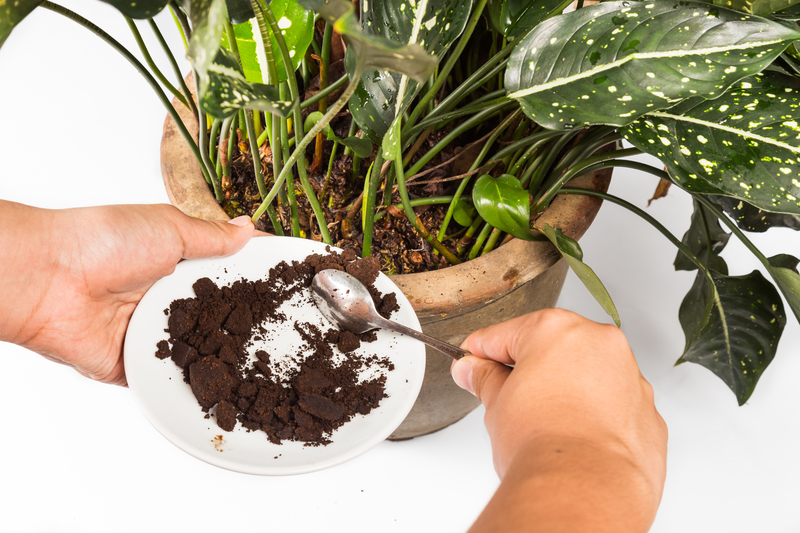Ideas for a Child-Friendly Outdoor Environment
Posted on 02/07/2025
Creative Ideas for a Child-Friendly Outdoor Environment
Looking to transform your backyard, garden, or community park into a vibrant, child-friendly outdoor environment? Whether you're a parent, teacher, or landscape designer, cultivating an inclusive and engaging outdoor area is critical for kids' physical, emotional, and social development. In this comprehensive guide, we'll share a wealth of ideas for child-friendly outdoor environments that are not just safe, but also imaginative, educational, and full of potential for fun!
Why Are Child-Friendly Outdoor Spaces Important?
Before exploring unique outdoor play space ideas, let's understand why a child-friendly outdoor setting matters.
- Physical Activity: Access to stimulating, safe outdoor areas encourages children to move, climb, run, and stay active, supporting motor skills and overall health.
- Cognitive Growth: Well-designed outdoor spaces inspire curiosity, problem-solving, and creativity through sensory and exploratory play.
- Social Skills: Group play, teamwork, and sharing become second-nature in family-friendly outdoor settings.
- Emotional Wellbeing: Time in nature reduces stress, increases focus, and nurtures resilience in children of all ages.

Design Principles for a Kid-Friendly Outdoor Area
To create an optimal kid-friendly outdoor environment, use these guiding principles:
- Safety First: Choose non-toxic materials, soft surfacing, and age-appropriate equipment. Remove hazards like sharp tools or toxic plants.
- Accessibility: Ensure spaces are inclusive for children of all abilities, with smooth paths, sensory stimuli, and adaptive play equipment.
- Variety: Mix active play zones, quiet corners, natural features, and creative installations for diverse interests and ages.
- Visibility: Design open sight lines for easy supervision and secure boundaries so children can play freely within a safe environment.
- Natural Elements: Incorporate trees, flowers, rocks, water, and sand for rich sensory experiences and ecological learning.
Top Ideas for a Child-Friendly Outdoor Environment
1. Interactive Nature Trails
Create winding paths lined with logs, stones, and native plants. Add educational markers to highlight insects, birds, and flora. Sensory paths with textures like pebbles, mulch, or grass underfoot engage children's senses and encourage barefoot exploration.
- Install stepping stones for hopping fun.
- Use aromatic plants like lavender or mint for olfactory stimulation.
- Add reflective mirrors at child height for visual surprises!
2. Adventure Playgrounds
A child-friendly outdoor playground doesn't need to be huge; even small backyards can host climbing structures, slides, and obstacle courses. Use wood, ropes, or recycled materials for eco-friendly play zones. Encourage risky play in controlled environments for confidence building.
- Balance beams, rope swings, and tire climbs add adventure.
- Install a "mountain" of real or faux rocks to scale.
- Opt for sand, grass, or rubber mulch as soft fall surfaces.
3. Water Play Features
Water play is irresistible to kids! Incorporate age-appropriate water features for cooling off and sensory fun.
- Install a splash pad with gentle jets or sprinklers.
- Create a self-contained stream or DIY water wall with recycled gutters and buckets.
- Use shallow basins for floating leaves, toy boats, and wildlife viewing.
- Designate mud kitchens for dramatic play, messy experiments, and tactile learning.
4. Imaginative Play Spaces
Stimulate creativity by adding zones for pretend play and storytelling in your family-friendly garden.
- Construct a fairy house village with twigs, pebbles, and shells.
- Install a teepee or tree fort as a secret hideout.
- Create a "market stall" for roleplay with old crates and fabric awnings.
- Chalkboard panels and portable easels encourage sketching and painting outdoors.
5. Edible Gardens and Sensory Beds
Let children dig, plant, and harvest in their own vegetable patch! Grow strawberries, tomatoes, sunflowers, and herbs to teach nutrition and patience (while encouraging healthy snacks).
- Raised beds are perfect for little hands.
- Label each plant with a fun sign to recognize shapes and letters.
- Include sensory plants: fuzzy lamb's ear, snapdragons, or fragrant basil.
6. Art and Activity Walls
Design vertical spaces for creativity and learning. Paint a wall with blackboard paint or install a magnetic board for word games and target tosses.
- Clip-on outdoor art displays celebrate children's masterpieces.
- String up musical chimes, pots, or wind spinners for auditory fun.
- Hang educational posters about bugs, birds, and flowers for visual interest.
7. Quiet and Relaxation Zones
Balance boisterous play with tranquil nooks. Add a hammock, cushioned bench, or blanket fort in a shady corner as a child-focused relaxation spot. Planting sunflowers, bamboo, or tall grasses can create cozy "living walls" that muffle noise and offer privacy.
8. Multi-Use Open Spaces
Preserve a grassy area for classic outdoor games, dancing, or picnics. This versatile space adapts for group play, events, and spontaneous fun. Add portable goals, cones, or hula hoops for soccer, tag, or obstacle races.
9. Wildlife Habitats
Foster a love for nature by inviting birds, butterflies, and bugs into your child-friendly backyard environment.
- Install a butterfly or bee house for pollinator support.
- Hang bird feeders, baths, or nesting boxes for feathered friends.
- Provide a bug hotel and let children observe its tiny inhabitants.
- Grow native wildflowers to enrich the ecosystem.
10. Inclusive and Adaptive Play Equipment
Ensure every child can join the fun! Accessible play equipment, ramps, transfer platforms, and sensory-rich features promote interaction and inclusivity.
- Install wheelchair-accessible swings and spinner bowls.
- Include textured paths and raised sand/water tables for sensory play.
- Use color contrasts and signage for children with visual impairments.
Materials and Equipment to Consider
- Natural Materials: Logs, boulders, sand, and untreated timber are durable, sustainable, and safe for play.
- Recycled Structures: Old tires, pallets, and barrels become tunnels, planters, and seats.
- Weather Protection: Shade sails, pergolas, and trees offer respite from sun or rain.
- Fencing: Low, see-through fences keep children safe without feeling confined.
Age-Appropriate Ideas for a Child-Oriented Outdoor Space
For Toddlers (Ages 1-3)
- Soft, level surfaces for safe crawling and toddling
- Push-and-pull toys, low slides, and rocking animals
- Musical play with xylophones, drums, or wind chimes
- Sand and water tables at accessible heights
- Shaded nap/rest nook with mats or blankets
For Preschool and Early Elementary (Ages 4-7)
- Challenging climbers, rope courses, and bridges
- Story circles, outdoor bookshelves, puppet theaters
- Miniature nature trails with treasure hunts
- Gardening beds for planting and tasting
- Art stations for messy, expressive projects
For Tweens and Older Children (Ages 8+)
- Fort building supplies, den-making corners
- Group games: soccer nets, basketball hoops, or volleyball
- DIY maker spaces for woodworking or science experiments
- Flexible hangout spots with seating for socializing
- Outdoor classrooms for nature science and creative writing
Tips for Maintaining a Safe and Engaging Outdoor Environment for Kids
- Regular Inspections: Check for broken equipment, splinters, or tripping hazards and repair them promptly.
- Hygiene: Clean sandpits, water play areas, and shared toys regularly to prevent bacteria buildup.
- Sun Protection: Provide sunscreen, hats, and leafy shade, especially during midday hours.
- Weather Adaptability: Ensure outdoor areas can be enjoyed year-round with rain shelters and winter activities.
- Parental/Guardian Supervision: Set up benches or picnic tables for adults to watch and interact.
Community and Educational Benefits of Child-Friendly Outdoor Spaces
An engaging child-centered outdoor environment offers more than just fun--it strengthens families and local communities, too.
- Encourages family togetherness and outdoor bonding time.
- Promotes neighborhood connections as children make friends and parents network.
- Supports schools and childcare settings with innovative learning landscapes.
- Enhances property value and community pride by beautifying shared spaces.

Engage Children in Planning and Caring for Outdoor Environments
To foster a sense of ownership and responsibility:
- Invite children to help choose play equipment, plants, and decorations.
- Encourage them to draw or model their dream garden or playground.
- Include children in the maintenance--watering plants, tidying toys, or painting fences.
- Create a "kids' council" for sharing ideas and feedback about the outdoor space.
Conclusion: Nurture Growth and Imagination Outdoors
A thoughtfully crafted child-friendly outdoor environment unlocks a world of adventure, creativity, and learning. Whether in your own backyard, at school, or in a community park, use these ideas for child-centered outdoor spaces to cultivate joy, curiosity, and development in every child. Remember--nature and imagination are the greatest playgrounds. Start planning today, and watch children thrive in their new outdoor haven!
```
